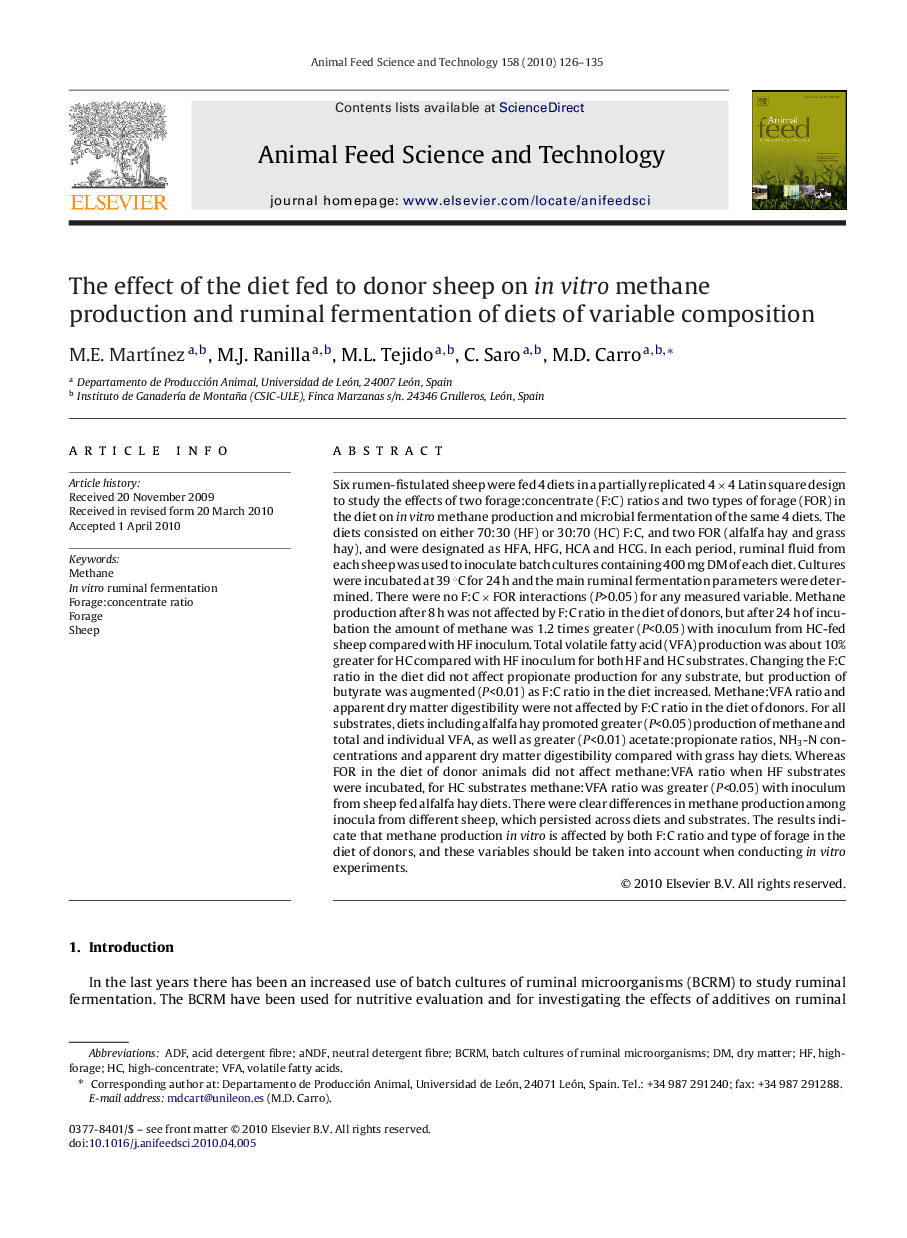| Article ID | Journal | Published Year | Pages | File Type |
|---|---|---|---|---|
| 2420360 | Animal Feed Science and Technology | 2010 | 10 Pages |
Six rumen-fistulated sheep were fed 4 diets in a partially replicated 4 × 4 Latin square design to study the effects of two forage:concentrate (F:C) ratios and two types of forage (FOR) in the diet on in vitro methane production and microbial fermentation of the same 4 diets. The diets consisted on either 70:30 (HF) or 30:70 (HC) F:C, and two FOR (alfalfa hay and grass hay), and were designated as HFA, HFG, HCA and HCG. In each period, ruminal fluid from each sheep was used to inoculate batch cultures containing 400 mg DM of each diet. Cultures were incubated at 39 °C for 24 h and the main ruminal fermentation parameters were determined. There were no F:C × FOR interactions (P>0.05) for any measured variable. Methane production after 8 h was not affected by F:C ratio in the diet of donors, but after 24 h of incubation the amount of methane was 1.2 times greater (P<0.05) with inoculum from HC-fed sheep compared with HF inoculum. Total volatile fatty acid (VFA) production was about 10% greater for HC compared with HF inoculum for both HF and HC substrates. Changing the F:C ratio in the diet did not affect propionate production for any substrate, but production of butyrate was augmented (P<0.01) as F:C ratio in the diet increased. Methane:VFA ratio and apparent dry matter digestibility were not affected by F:C ratio in the diet of donors. For all substrates, diets including alfalfa hay promoted greater (P<0.05) production of methane and total and individual VFA, as well as greater (P<0.01) acetate:propionate ratios, NH3-N concentrations and apparent dry matter digestibility compared with grass hay diets. Whereas FOR in the diet of donor animals did not affect methane:VFA ratio when HF substrates were incubated, for HC substrates methane:VFA ratio was greater (P<0.05) with inoculum from sheep fed alfalfa hay diets. There were clear differences in methane production among inocula from different sheep, which persisted across diets and substrates. The results indicate that methane production in vitro is affected by both F:C ratio and type of forage in the diet of donors, and these variables should be taken into account when conducting in vitro experiments.
